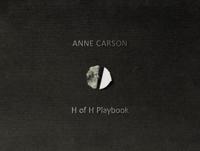Publisher's Synopsis
Excerpt from The Poetical Works, Vol. 2 of 4: And Other Writings of John Keats, Now First Brought Together, Including Poems and Numerous Letters Not Before Published; Edited With Notes and Appendices
Posthumous and Fugitive Poems - continued Sonnet to George Keats: written in Sickness La Belle Dame sans Merc1. Sonnet written on a Blank Page of Shakespeare' 5 Poems, facing A Lover's Complaint Otho the Great a Tragedy, in Five Acts Editor's Note before Otho the Great Dramatis Personae Act I Act II Act III Act IV Act V King Stephen a Dramatic Fragment Editor's Note before King Stephen King Stephen The Cap and Bells; or, The Jealousies a Faery Tale - un finished Editor's Note before the Cap and Bells The Cap and Bells Appendix to Volume 11 I. Review by Leigh Hunt of Lamia, Isabella &c. II. Later Remarks on Keats by Leigh Hunt III. Boccaccio's Story of Isabella in English by John Payne IV. The sad ditty born of the Story of Isabella V. Extract from Clarke's Riches of Chaucer as to the composition of the Sonnet on The Floure and the Lefe VI. John Hamilton Reynolds's Robin Hood Sonnets VII. Letter from Benjamin Robert Haydon concerning the Sonnets on the Elgin Marbles VIII. Sonnets from Leigh Hunt's Foliage - Milton's Hair IX. The Nile Sonnets of Leigh Hunt and Shelley X. Sonnet on Dark Eyes by John Hamilton Reynolds XI. Sonnet by Ronsard XII. La Belle Dame Sans Mercy: a paper by Leigh Hunt, from The Indicator.
About the Publisher
Forgotten Books publishes hundreds of thousands of rare and classic books. Find more at www.forgottenbooks.com
This book is a reproduction of an important historical work. Forgotten Books uses state-of-the-art technology to digitally reconstruct the work, preserving the original format whilst repairing imperfections present in the aged copy. In rare cases, an imperfection in the original, such as a blemish or missing page, may be replicated in our edition. We do, however, repair the vast majority of imperfections successfully; any imperfections that remain are intentionally left to preserve the state of such historical works.










